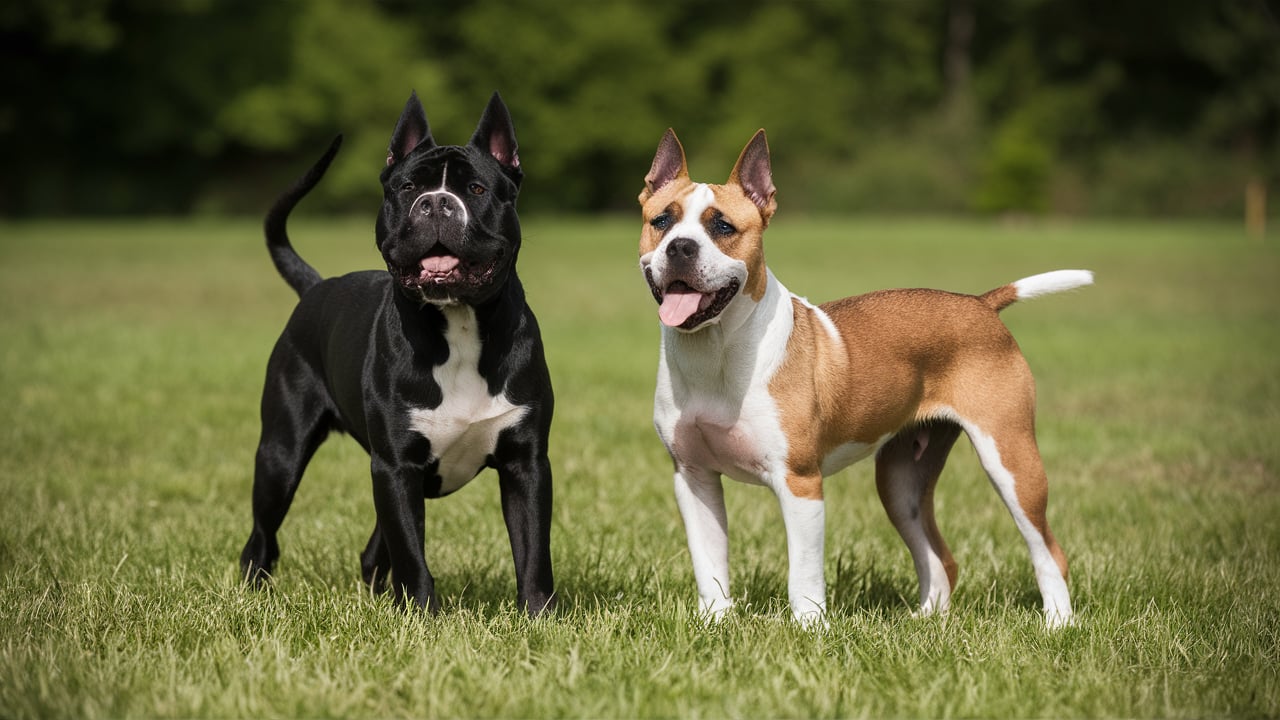When considering a strong, loyal dog to join your family, two breeds often come to mind: the Cane Corso and the Argentine Dogo. Both breeds are well-regarded for their power, fidelity, and protective instincts. However, they each have unique characteristics that may make one more suitable for your lifestyle than the other. This detailed comparison explores the differences between the Cane Corso and the Argentine Dogo in 2024, covering their origins, appearance, temperament, training needs, and suitability as family pets.
Origins and History
Cane Corso: The Cane Corso, also known as the Italian Mastiff, boasts a history that traces back to ancient Rome. Originally bred as war dogs and hunters, they were used for guarding property, hunting large game, and assisting in battles. The name Cane Corso comes from the Latin word “cohors,” meaning “protector” or “guardian.” Over time, the Cane Corso evolved into a versatile working dog, excelling in roles such as herding livestock and providing protection.
Argentine Dogo: The Argentine Dogo, or Dogo Argentino, was developed in Argentina in the early 20th century by Dr. Antonio Nores Martínez. His goal was to create a breed capable of hunting big game like wild boar and puma, while also being a loyal family companion. The Dogo Argentino was created by crossing several breeds, including the Cordoba Fighting Dog, Pointer, Boxer, and Great Dane. This resulted in a powerful, courageous, and versatile dog with a strong prey drive and protective instincts.
Appearance and Physical Traits
Cane Corso:
- Size: Males typically stand 25-27.5 inches tall, while females are slightly shorter at 23.5-26 inches. They generally weigh between 88 to 110 pounds.
- Build: The Cane Corso is muscular and well-proportioned, with a broad chest and powerful limbs.
- Coat: They have a short, dense coat that comes in various colors, including black, fawn, gray, and brindle.
- Head: The Cane Corso has a large, square-shaped head with a broad skull, strong jaws, and a slightly wrinkled forehead.
Argentine Dogo:
- Size: Males are usually 24-27 inches tall, while females are 23.5-26 inches. Their weight typically ranges from 80 to 100 pounds.
- Build: The Argentine Dogo is well-muscled and athletic, with a strong and agile build.
- Coat: They have a short, smooth, white coat, sometimes with a small black or dark patch on the head.
- Head: The Dogo Argentino has a large, broad head with a powerful jaw and a slightly concave muzzle.
Temperament and Behavior
Cane Corso: The Cane Corso is celebrated for its dedication, vigilance, and intelligence. They form strong bonds with their families and are instinctively protective, making them exceptional watchdogs. While they may be reserved around strangers, they show a gentle and loving side to their owners. Early and consistent training, coupled with socialization, is crucial to shaping them into well-behaved adults.
Argentine Dogo: The Argentine Dogo mirrors these loyal and protective qualities, coupled with a pronounced prey drive and fearless disposition. Their bravery and determination shine through in hunting scenarios. Similar to the Cane Corso, they thrive with early socialization and training to temper their protective nature. With proper guidance, they can be affectionate family members, even around children.
Training and Exercise Needs
Cane Corso:
- Training: The Cane Corso is an intelligent and eager learner, making them relatively straightforward to train. However, they need a firm yet gentle hand, as they can exhibit stubbornness and independence. Positive reinforcement methods are the most effective.
- Exercise: Regular exercise is vital to keep this breed healthy and content. Daily walks, engaging playtime, and mental stimulation are essential to prevent boredom and any destructive tendencies.
Argentine Dogo:
- Training: The Argentine Dogo is smart and trainable, but their strong prey drive requires careful handling. Consistent, positive training and early socialization are key to ensuring they follow commands and behave appropriately in different settings.
- Exercise: The Dogo Argentino is a lively and energetic breed that demands ample physical activity. They thrive in environments where they can engage in strenuous activities such as running, hiking, and play.
Health and Lifespan
Cane Corso:
- Lifespan: The typical lifespan of a Cane Corso is about 9-12 years.
- Health Issues: Common health concerns include hip dysplasia, elbow dysplasia, and certain heart conditions. Regular vet visits, a well-balanced diet, and sufficient exercise can contribute to their overall health.
Argentine Dogo:
- Lifespan: The Argentine Dogo typically lives around 10-12 years.
- Health Issues: They are prone to hip dysplasia, deafness (due to their white coat), and certain skin conditions. Regular health screenings, a nutritious diet, and sufficient exercise are essential for their well-being.
Suitability as Family Pets
Cane Corso: The Cane Corso can be an excellent family pet for those experienced with large, powerful breeds. They are protective, loyal, and affectionate with their families but require consistent training and socialization. They thrive in homes with ample space and owners who can provide the necessary exercise and mental stimulation.
Argentine Dogo: The Argentine Dogo is also a great family companion, especially for active families who can meet their exercise needs. They are protective and loving but require early training and socialization to manage their strong prey drive and protective instincts. A secure yard and regular physical activity are essential for this breed.
Conclusion
Choosing between a Cane Corso and an Argentine Dogo depends on your lifestyle, experience with large breeds, and the specific needs of your household. Both breeds offer loyalty, protection, and companionship, but they require dedicated training, socialization, and exercise to thrive. Whether you prefer the muscular build and guardian instincts of the Cane Corso or the athletic prowess and hunting capabilities of the Argentine Dogo, either breed can make a wonderful addition to the right family in 2024.





